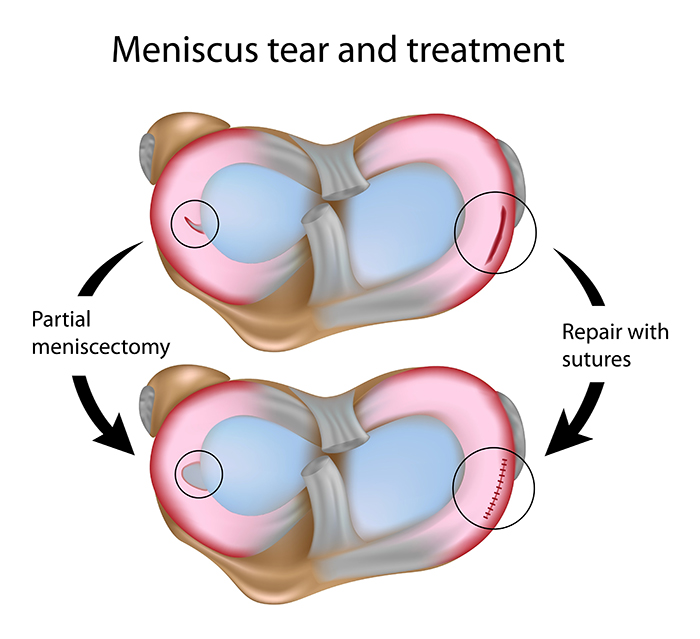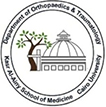
Arthroscopic Partial meniscectomy is a surgical procedure to remove the torn portion of the meniscus from the knee joint. Meniscus is the C-shaped cartilage located in the knee that lubricates the knee joint, acts as shock-absorber, and controls the flexion and extension of joint. Meniscal tears can occur at any age, but are more common in athletes playing contact sports. These tears are usually caused by twisting motion or over flexing of the knee joint. Athletes who play sports, such as football, tennis and basketball are at a higher risk of developing meniscal tears.
You may have pain over inner and outer side of the knee, swelling, stiffness of knee, restricted movement of the knee, and difficulty in straightening your knee. If the conservative treatment such as pain medications, rest, physical therapy, and use of knee immobilizers fails to relieve pain, then surgery may be recommended. Surgical treatment options depend on the location, length, and pattern of the tear.
There are two surgical procedures for meniscal tears which includes partial meniscectomy and meniscus repair. In partial meniscectomy your surgeon will only shave the torn, loose meniscus leaving only the stable portions of the meniscus.
Partial meniscectomy is performed with arthroscopy, where two small incisions are made around the knee. (Key Hole Surgery) Through one of the small incisions, a miniature camera is inserted to see inside of the knee.

Tiny surgical instruments are inserted through other small incision to shave the tear. During the procedure the torn meniscus is removed and the remaining edges of the meniscus are smoothened so that there are no sharp ends. Any unstable fragments which are causing locking and catching sensation will also be removed.
Partial meniscectomy helps in restoring or maintaining knee stability and offers faster and complete recovery. After surgery rehabilitation exercises will start immediately after the surgery to restore knee mobility, strength and to improve range of motion.
Arthroscopic Meniscal repair can be done by suturing the tear and giving it enough time to heal but it depends on the site, shape, extent and grade of the tea. The postoperative rehabilitation will differ with meniscus repair because we have to protect the sutures till meniscus healing.






